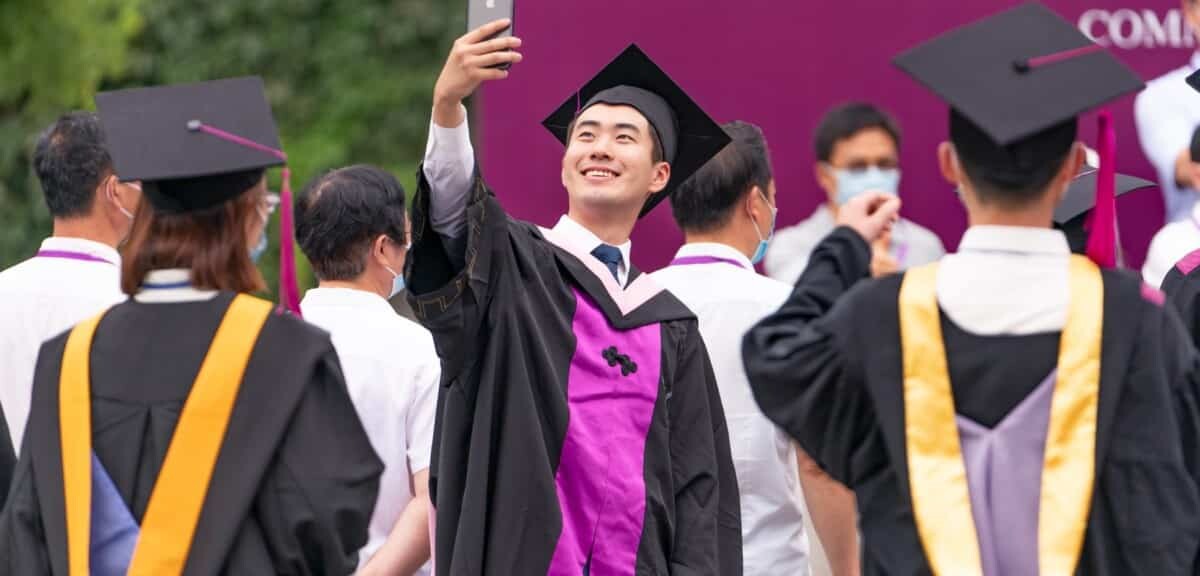China’s educational resurgence is much less a threat than an opportunity for American and other international universities, argues Professor William Kirby.
This post originally appeared in The Wire China on August 28, 2022.
We live in a de-globalizing world. The United States and China each privilege self-interest over common concerns. Mutual paranoia has taken precedence over mutual benefit. Each country imagines a future of greater “self-sufficiency” even if neither has ever gained from it. What does this mean for the world of universities? For the world of shared research and learning?
My new book, Empires of Ideas , asks this question: if German universities defined global standards in the 19century; and if American universities — learning from their German tutors — came to lead the global rankings by the end of the 20century; are Chinese universities — having taken lessons from both Europe and America (with a bit of Soviet seasoning) — poised to lead the 21 century? Higher education is one industry in which the U.S. is still number one. Will China threaten American primacy?
Very possibly. After all, China is home to more of the best intellectual capital — Chinese scholars at home or in the diaspora — than any country on Earth. Chinese universities continue to rise in the global rankings, and two of them, Tsinghua and Peking, will surely be among the world’s top ten in short order. China has the world’s fastest growing higher education system in quality as well as quantity.
Yet China’s educational resurgence is much less a threat than an opportunity for American and other international universities.American research universities have been strengthened enormously by recruiting Chinese doctoral students, themselves largely graduates ofChinese universities, who are admitted exclusively on the basis of merit. Our faculty ranks, too, are augmented by extraordinary Chinese scholars. We restrict these students and colleagues at our own peril.Today, any research university that is not open to talent from around the globe is on a glide path to decline.
Who can afford not to interact with China? Surely not the United States…
In recent decades, faculty at American universities have pursued research in China and with Chinese colleagues on the world’s pressing challenges. In my own university, the the Harvard-China Project in our engineering schoolworks with colleagues at Tsinghua to study China’s atmospheric environment, reduce greenhouse gas emissions, and improve energy storage capabilities. The Harvard China Fund, the university’s “academic venture fund” for China that I chair, supports faculty research in China, with Chinese partners, across the sciences, social sciences, and humanities. Similar levels of collaboration may be found at nearly every major American research university. One result is that in 2018, 26 percent of U.S. internationally coauthored articles in science and engineering included researchers from China.
Who can afford not to interact with China? Surely not the UnitedStates, whose leadership position in higher education is endangered not by China, but by the systematic disinvestment in public higher education in 44 out of 50 American states. Our famous private universities suffer less from competition with China than from what Richard Brodhead, the former dean of Yale College and former president of Duke, calls “the inertia of excellence.”
Within China, innovation in higher education has allowed the founding of ambitious, joint-venture universities and programs such asNYU-Shanghai, Duke Kunshan University, and Schwarzman Scholars at Tsinghua University, all with the strong support of China’s Ministry of Education. Beyond these there are opportunities for cooperation with new institutions such as Westlake University, ShanghaiTech, andSUSTech (the Southern University of Science and Technology, in Shenzhen).
But wait: is not today’s China so repressive that it should be against the values of any U.S. university to “do business” in China? In 2018, faculty members at Cornell University forced the suspension of a program with Renmin University after it disciplined students who had formed independent Marxist reading groups and advocated for workers’ rights.But Cornell’s self-righteous faculty had no clue as to how hard Renmin University’s leaders tried to protect these students — or indeed how proud they and the leaders of other Chinese universities, with similar student movements, were of these idealistic youth. Several Chinese university presidents and party secretaries lost their jobs over the“Marxist student” affair. By cutting our ties to their universities, we hurt most the people who broadly share the values of university leaders the world over. Americans too often prefer the grandstanding of sanctions to the hard work of understanding.
At the moment, the global COVID-19 pandemic has severely limited many forms of Chinese-American academic cooperation. It has allowed a strange brew of isolationism and nationalism to ferment in both countries.
If the U.S. and China do indeed decouple in matters academic as inother realms, we will be repeating bitter histories. John Fairbank, the founder of modern China studies in the United States, once told me that his biggest regret during the Cold War was his inability to maintain contact with his mentors and colleagues at Tsinghua and other universities.
In the 1950s, the FBI established a program to monitor Chinese-born scientists, including U.S. citizens. Chinese-born rocket scientist Qian Xuesan was accused of harboring communist sympathies. A brilliant researcher at Caltech and MIT, Qian had worked in the ManhattanProject, which produced the first American atomic bomb. In 1950, Qian was placed under house arrest for five years. (Upon his release, here turned to China to lead the development of the Chinese missile program.)
As if replaying a warped LP record, recent years have seen the high-profile indictments of Professors Wen Ho Lee (Los Alamos) andGang Chen (MIT), only to see charges dropped after muchreputational damage. American universities survived the first “red scare”in the 1950s, but they are now girding themselves for a second.
There are pressures to decouple in China, too, where earlier this year, three universities withdrew from all global rankings to pursue“education with Chinese characteristics.” But is there really a “China model” for universities? The answer is basically no. For nearly 130 years, Chinese universities have grown and flourished on international models and in partnership with the great institutions of Europe andNorth America. They have propelled China to the first ranks in science and engineering, while — whenever political circumstances have permitted — promoting the values of open inquiry that have marked the world’s leading universities. They have outlived an empire, several republics, and multiple incarnations of the People’s Republic of China.They have seen political campaigns, such as the current ones, come and go. They must take the long view. So should we.
At the moment, the global COVID-19 pandemic has severely limited many forms of Chinese-American academic cooperation. It has allowed a strange brew of isolationism and nationalism to ferment in both countries. As I wrote in a recent editorial in the journal Science: “A self-isolating China is a threat to itself and a loss to the world.” The same can be said about the United States.


